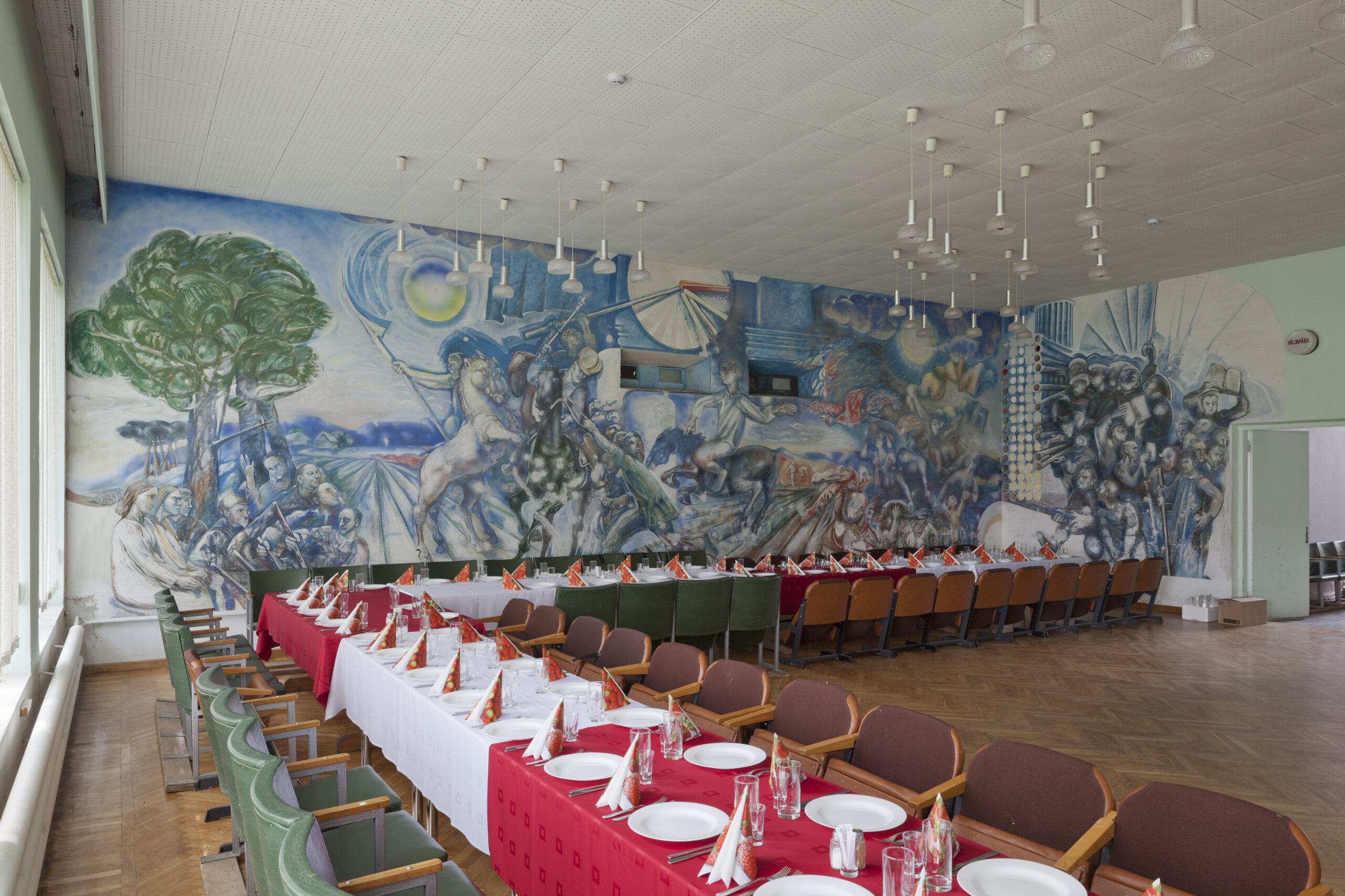Secco Painting Mahtra sõda (“Mahtra War”)
Year of completion: 1985
Address: Põlva County, Põlva Parish, Peri Village
Author Andrus Kasemaa
Tempera on dry plaster
Not under conservation as a cultural monument
Upon the completion of the collective farm centre designed by Ado Eigi and Ann Toode in the old Peri manor park on the shore of the glacial valley, a large-scale pannel was commissioned from Tartu artist Andrus Kasemaa for the hall. The theme was to be based on the economic entity’s name.
Kasemaa did not let the client’s expectations or the pressure of the new regime hinder his frantic and expressive artistic nature. Even the openings for film projectors and ventilation are absorbed into the painting’s militant turmoil. In addition to the characters of the novel, about half a dozen collective farm workers have been painted into the scenes. These were the workers who curiously visited the room in the course of the painting’s creation (the chairman can be seen with a gun on the lower left part of the short wall, and the bookkeeper can be seen with the code of law on the upper right). In the middle of the group is the red-bearded Matti Milius.
In the beginning of 2021, the pannel was restored by Randel Saveli, under the supervision of Tuuli Puhvel, as his final project in the Pallas University of Applied Sciences. As the hall of the current Peri community centre had been used for playing ping-pong and billiards, the painting had been damaged in numerous spots, which were then widely plastered over with white filling. Some of the gun barrels acting as ventilation holes had been robustly plastered shut.
Already during restoration work, the restorers were starting to realise the threat to the building and the pannel. Indeed, the municipality has the plan to demolish the building in favour of a new energy efficient building. Moving such a large piece, which has been integrated in the architecture would be a rather utopian undertaking. Are the four small ravens, five horses, roughly forty five human figures, and phoenix really destined to be destroyed like a sand mandala? Luckily a plucky group of town folk has proposed the idea that the depreciated building could be substantially reduced, and the hall could be transformed into an art temple-park pavilion with the addition of the necessary rooms, open shelters, and terraces to cover the area of the hall.
As a conclusion, here is a thought from Randel Saveli’s final paper: “The Peri wall pannel is, in its essence, a piece that clearly belongs to the genre of street art, the likes of which were created on the streets of New York during the same era, but not in the cultural hubs of ESSR collective farm centres. The pannel is socially evocative, contains humorous subtext with hidden nuances, and is even executed in a similar technique.”
Tuuli Puhvel







